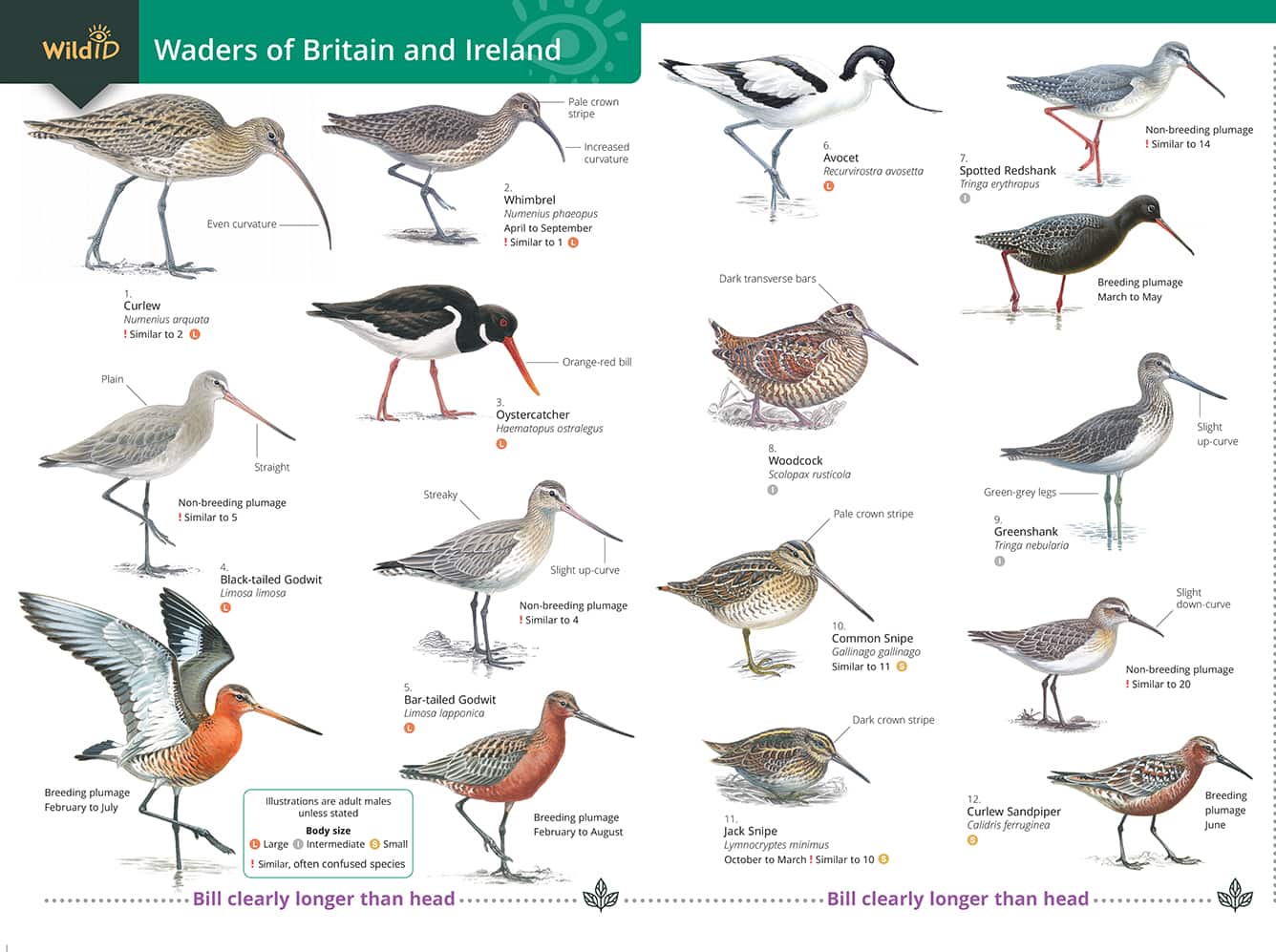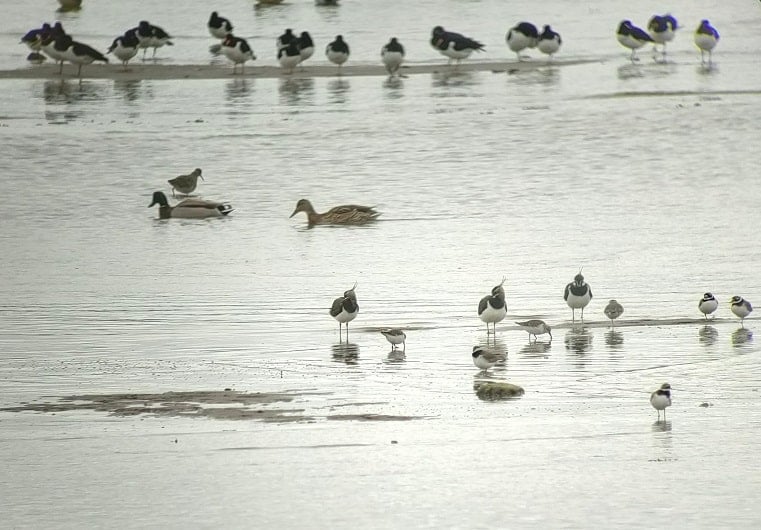Waders of Britain and Ireland: a new WildID guide
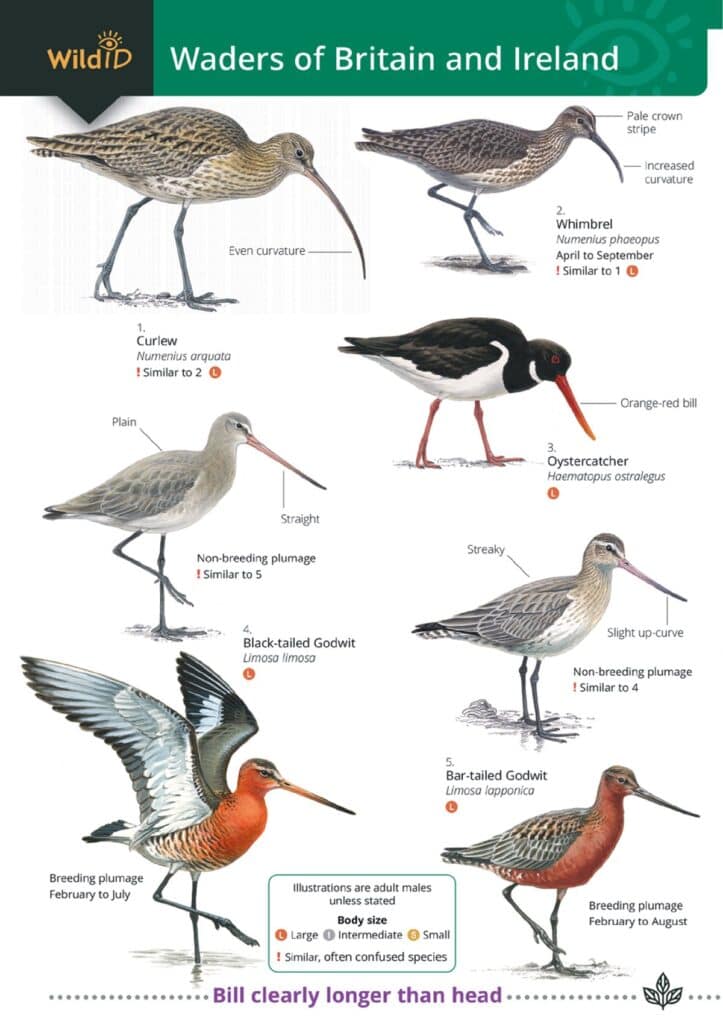
Steve Docker is a Resource Development Officer with Field Studies Council Publications. Here he decribes a new WildID guide to the Waders of Britain and Ireland, plus associated online digital resources. It’s available for a special earlybird price of just £3 if ordered by 1 October 2023.
During the return leg of a most enjoyable trip to the Outer Hebrides last year I found myself recounting the marvellous array of waders observed in a variety of plumages. I reflected upon my route to learning this group of birds and the difficulties, challenges and frustrations encountered along the way.
What is a wader?
Waders are a distinctive group of birds and many can be seen all year round.
Often seen walking or wading in shallow water while feeding on invertebrates, they are mainly birds of shorelines, waterside margins and open areas, both near the coast and inland.
Most nest in ‘scrapes’ on the ground and some species undertake extensive migrations between their breeding and wintering grounds.
The identification challenge
Unfortunately wader identification can be tricky. Although bird identification books can include lots of beautiful colour paintings, these are not very practical for real-world wader watching. Frequently your view of the bird is from a distance and in poor weather conditions.
A further difficulty comes from variations in plumage, which may differ between male, female and immature birds. Moreover some species have an understated non-breeding plumage, as well as a more distinctive breeding plumage. There may also be transitional plumage types. In addition waders vary in size from Curlew (with a wingspan of 98 cm) down to Little Stint (29 cm). They may be in mixed species groups, including non-wader species (see photograph below). Binoculars and/or a telescope are therefore recommended.
Despite these many difficulties, accurate identification is still possible. Under such circumstances, identification is principally based upon body shape, especially bill length and bill curvature. Body size, behaviour, calls, time of year, location and habitat are also important. Plumage colour, patterns and pale areas help to confirm an identification.
Over the years I have read books, attended courses, workshops and specialist guided holidays and more recently I have also completed on-line courses such as Wader ID offered by the British Trust for Ornithology. These are all useful to obtain the basics but there is no substitute for learning outdoors in the real world. It was out in the field with no expert nearby, perhaps in a remote location with an unreliable mobile phone signal that help was most needed.
The new resources
To help with this particular identification challenge the Field Studies Council has produced an integrated suite of wader resources – both a WildID fold out guide and two digital resources called Identikit and Quizlet.
WildID Waders of Britain and Ireland is the latest identification guide to join Field Studies Council’s extensive collection of publications. This 12 page laminated fold-out guide covers the identification of 28 wader species that occur in Britain and Ireland on a regular basis. Like other WildID guides, it is designed for outdoor use, so is laminated, rucksack-sized and lightweight.
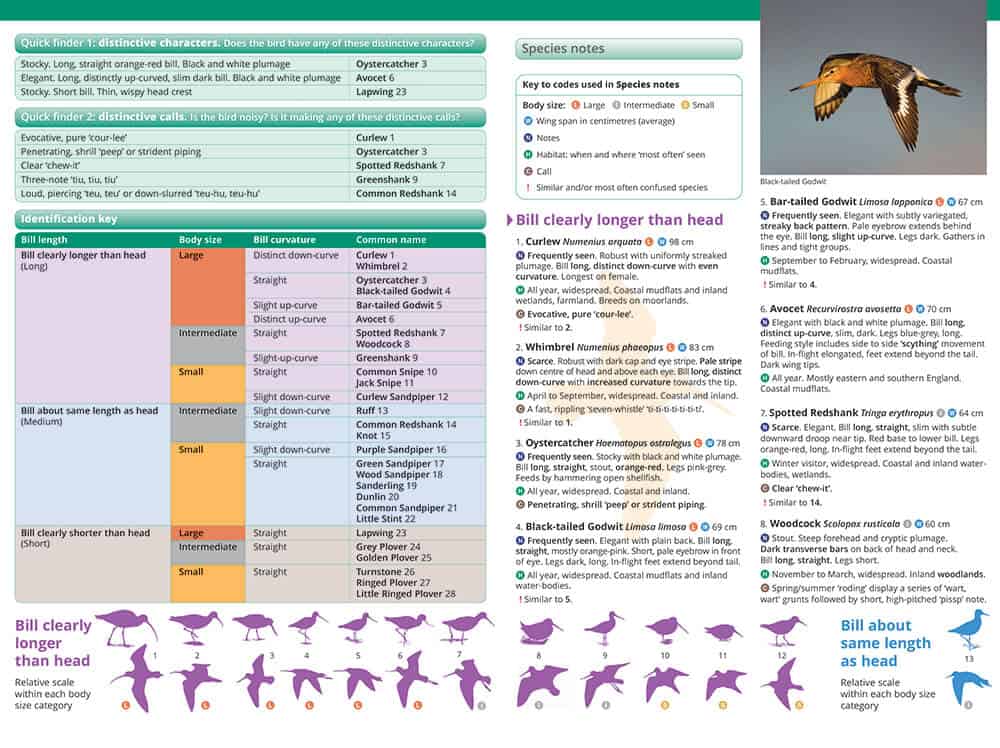
The guide includes a simple identification key, wader silhouettes and stunning illustrations of each wader standing and in flight by Mike Langman. Mike is a wildlife artist renowned for his illustrations of birds and a regular contributor to Field Studies Council publications.
The development of these resources can be traced back to ‘Wader and Wildfowl’ workshops led by Keith Offord in 2008 and 2013. Keith is an experienced field ornithologist, bird tour guide and photographer and I was inspired by time spend with him, watching waders on the Essex and Suffolk marshes.
Additional digital resources to help develop your ID skills
In addition, for users who want to develop their ID skills further, we have developed two digital resources. Identikit is an innovative, multi-access identification key and is a legacy of the Field Studies Council Tomorrow’s Biodiversity project. Quizlet is a flash card learning system. Both include photographs by Keith Offord and silhouettes by Mike Langman.
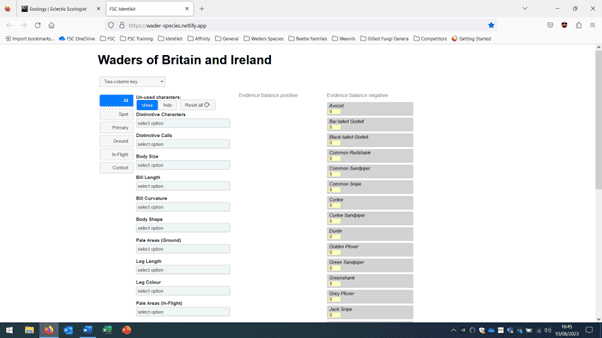
Identikit Waders of Britain and Ireland
The aim of both the WildID and Identikit resources is to direct the user to a wader species or shortlist of species in the field. Whilst they provide guidance as to what species are most likely to be present it is important to keep an open mind because waders don’t read the books! They can turn up at unusual locations, any time of year and in unexpected plumage types. Feedback on any of these new resources is always welcome.
Want to learn more?
Check out the wide range of Field Studies Council courses and the British Trust for Ornithology. Also, why not visit the websites of Steve Docker, Keith Offord and wildlife illustrator Mike Langman. For help with wader calls go to xeno-canto. This is a citizen science project dedicated to sharing wildlife sounds.
To help us all appreciate and enjoy biodiversity and better understand the changing state of nature the Field Studies Council has produced a wide range of high quality identification resources. In particular the WildID fold-out guides and Aids to Identification in Difficult Groups of Animals & Plants (AIDGAP).
The WildID Waders of Britain and Ireland (OP212) ISBN: 978 1 908819 89 5 is available from the our online shop.
Answer: Foreground: Lapwing showing head crest, with Ringed Plover and Dunlin. Middle distance: Common Redshank with pair of Mallard ducks (non-waders). Background: Group of Oystercatchers. Viewing distance approximately 150 metres.

